Petřín is a green hill in the center of Prague, which is one of the highest and most famous hills of the Czech capital, included in the list the main attractions of the city.
Petřín rises 327 meters above sea level and about 130 meters above the left bank Vltava River.
The green slopes of the hill are an oasis for walking and relaxing.
On the hill there are gardens, paths and alleys for walking, places for recreation, a playground, a fountain, a spring, monuments and sculptures, observation decks, panoramic cafes, restaurants and hotel, tower with observation deck, as well as monastery, stadium, some important sights and museums of the city.
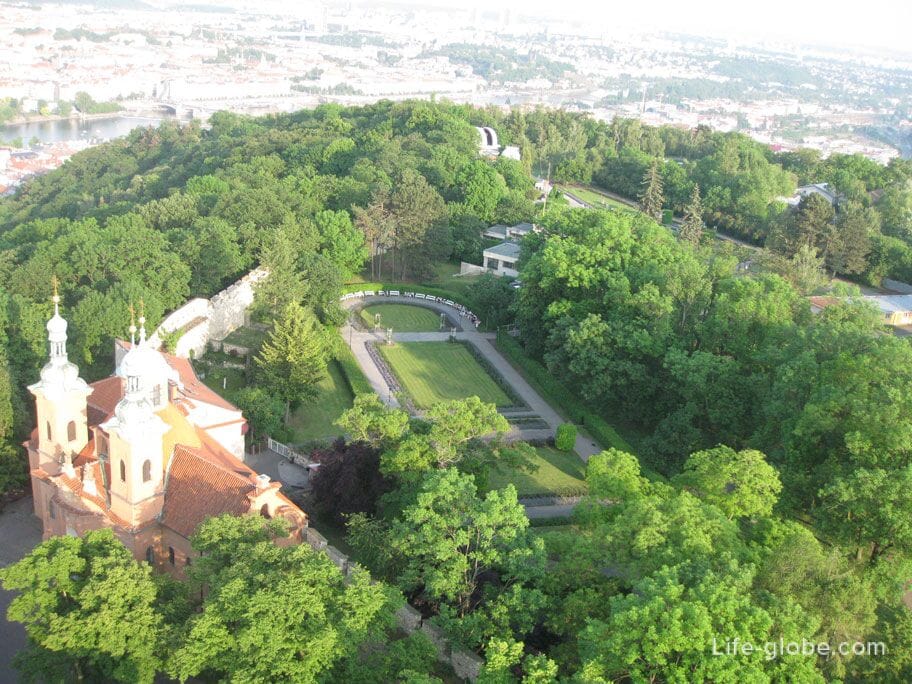
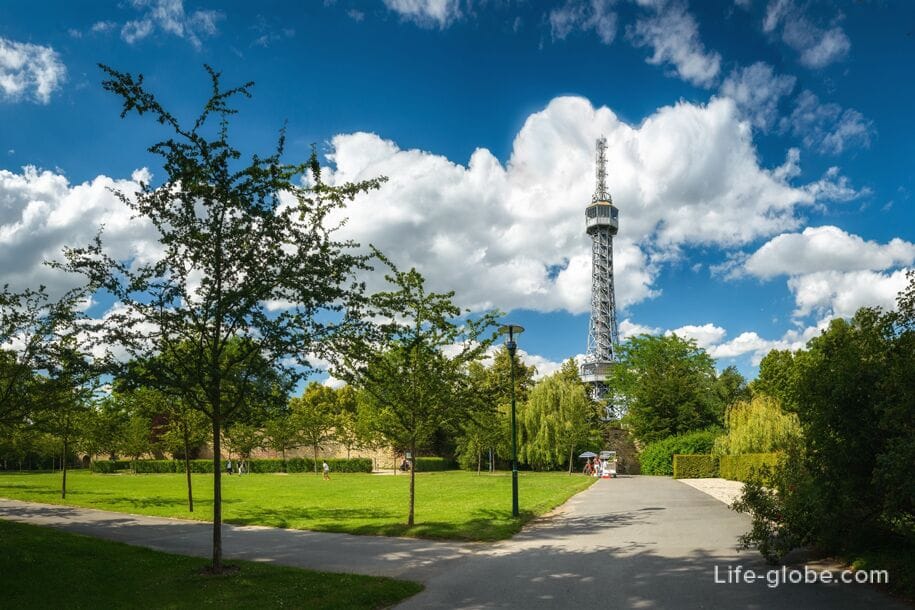
You can climb Petřín on foot or by funicular from the Uyezd tram stop (Újezd). Funicular route: Újezd - Nebozízek - Petřín.
A one-time funicular ticket, a subscription to Prague, 24- and 72-hour city transport tickets, as well as travel documents at special rates and documents entitling to free travel are valid for the funicular.
Tickets can be purchased at funicular stops at vending machines.

Walking through the gardens on the slopes of the Petrshinsky Hill, you can admire the views of Prague. From some points and from the viewing platforms of Petrshin there are wonderful panoramic views of the city.


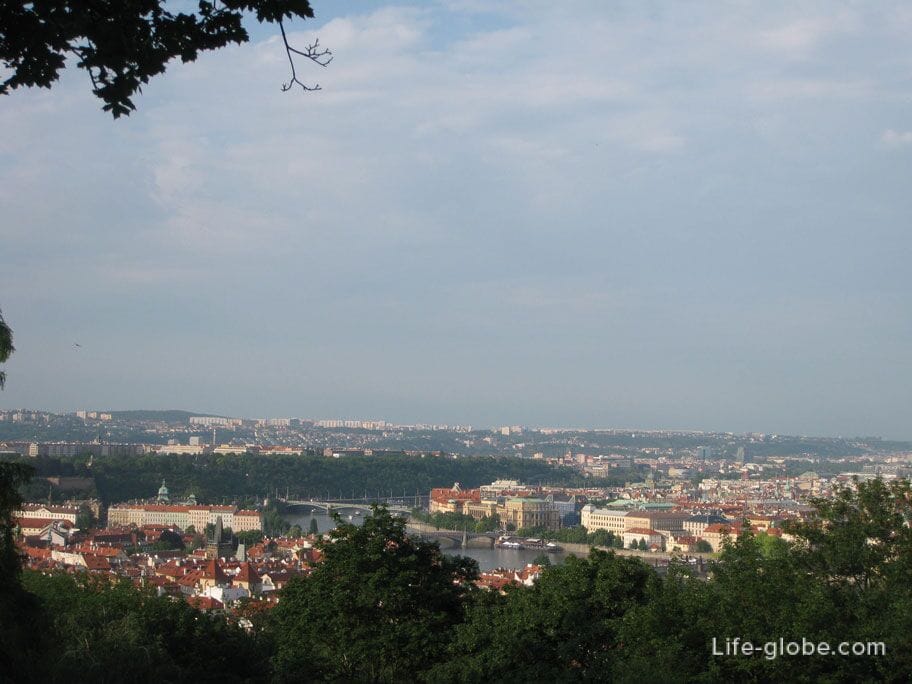
Panoramic restaurants and a hotel on Petrshin
There are cafes and restaurants on the Petrshinsky Hill, some of which have terraces with panoramic views of the city. There is also a hotel on the hill.
Restaurant "Nebozízek" with indoor and outdoor panoramic terraces and a variety of dishes of traditional Czech and Old Czech cuisine, as well as international cuisine.
Also located here is 4-star apart-hotel Nebozizek Hotel a Restaurant, from the rooms of which offer panoramic views of Prague Castle and the Old Town. Breakfast is included in the room rate. Link to the hotel
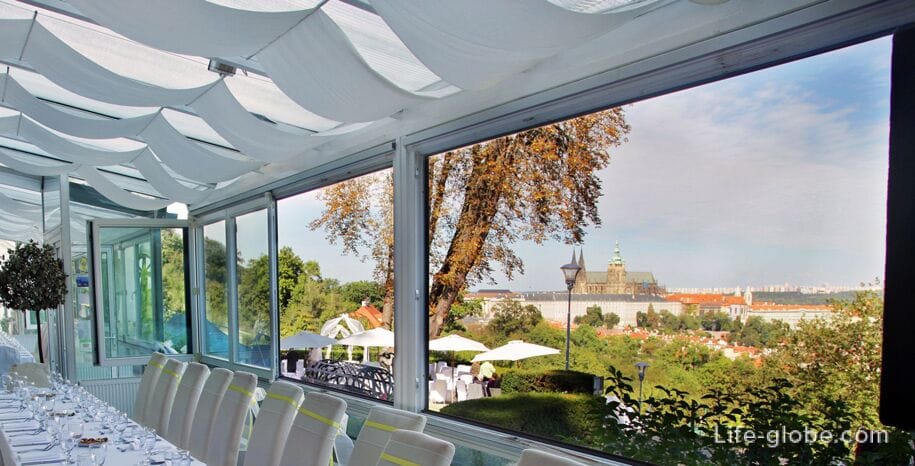
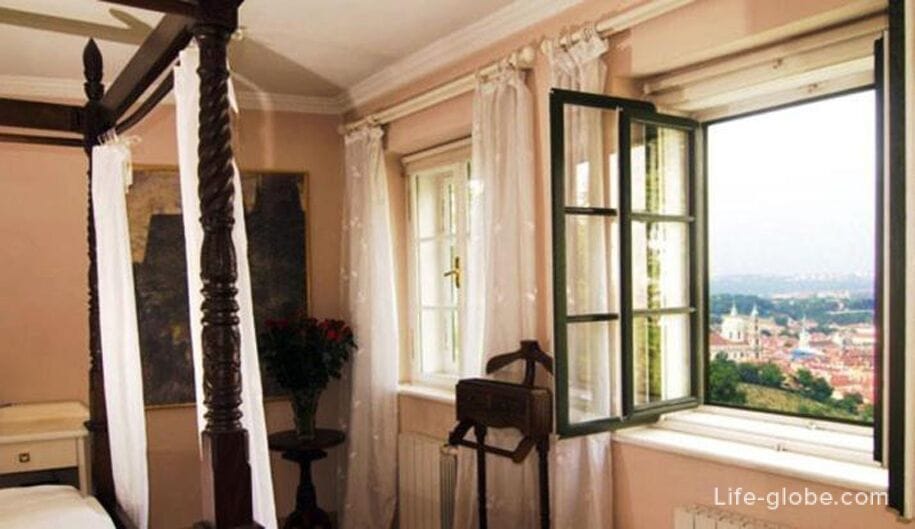
Petřínské terasy restaurant in the style of a hut with an outdoor terrace and a beer garden.
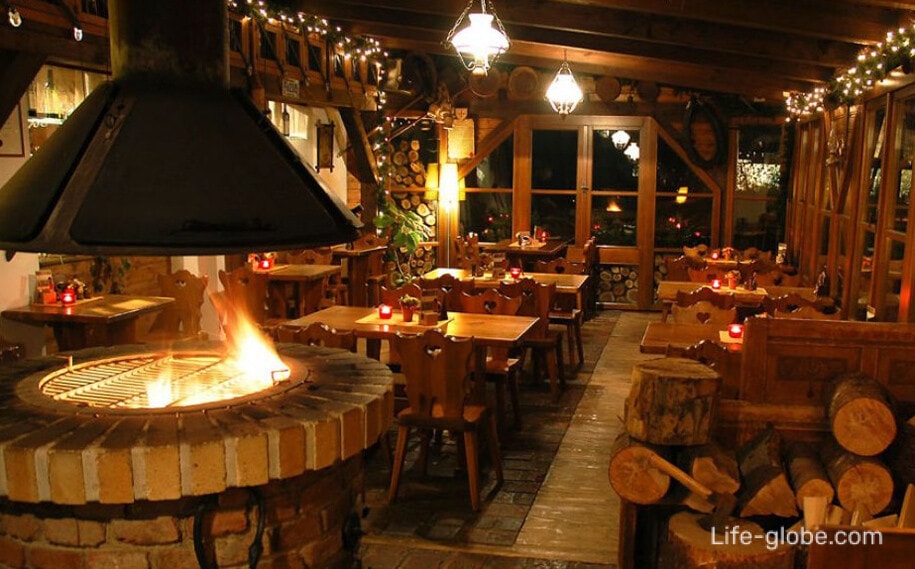
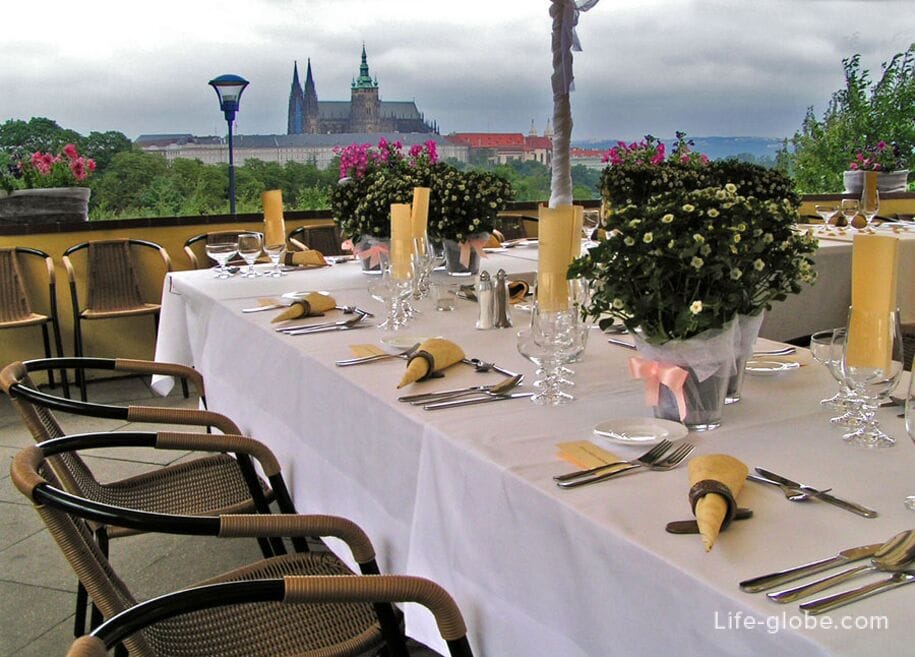
Attractions and museums on Petrshin Hill
Petrshinskaya Observation Tower
The most visited object of the Petrshinsky Hill is the Petrshinsky Tower (Petřínská rozhledna) - a steel tower, which is a free reduced copy parisian Eiffel Tower.
In the upper part of the Petrshin tower there is an observation deck, and on the underground level there is a small exposition about Petrshin.
The observation deck of the tower offers some of the best panoramic views of Prague in the city.
The ascent to the observation deck is paid. More about the Petrshinskaya Observation Tower…


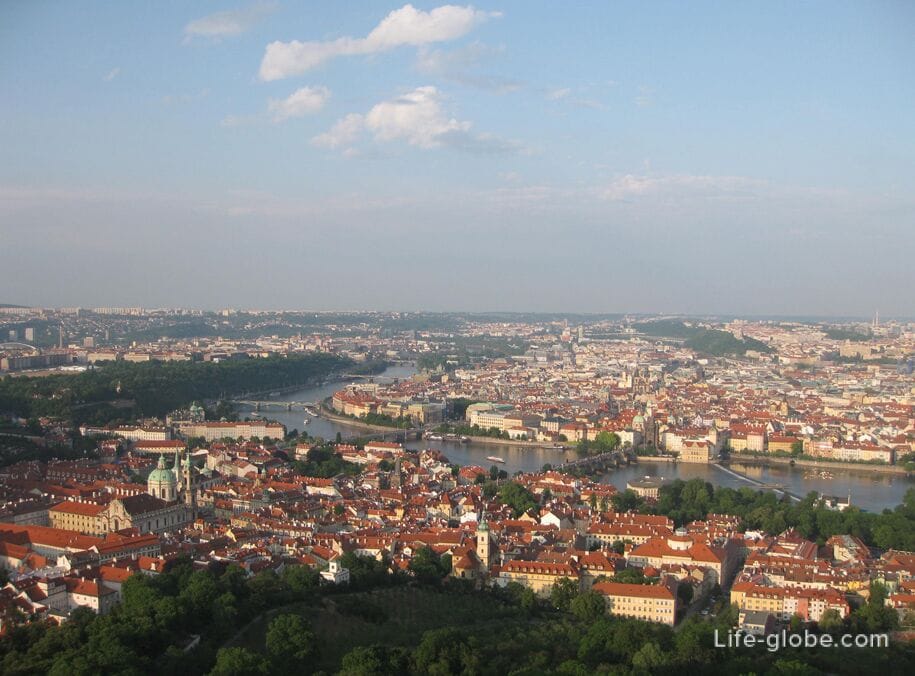
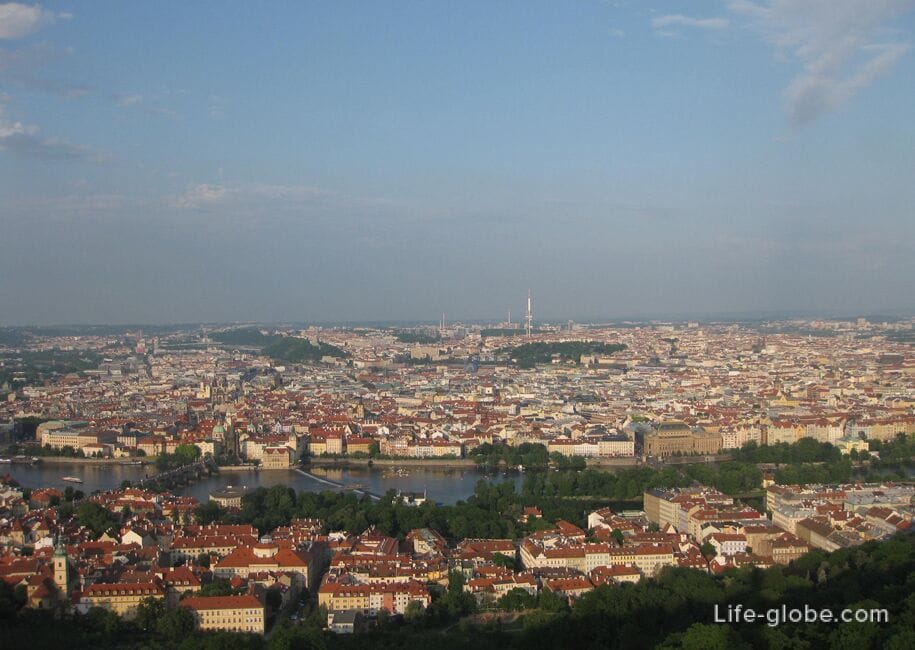
Mirror Maze
The Mirror Maze (Zrcadlové bludiště na Petříně) is an entertainment for children and adults, which is located in a building resembling a small castle from the outside, which was built according to the project of architect Wil as a pavilion of the Czech Tourists Club at the Anniversary Exhibition in Prague in 1891.
Inside there is a mirror maze that leads guests to the image of the battle of Prague with the Swedes on Charles Bridge in 1648, and the "Hall of Laughter", equipped with various curved mirrors.
Entrance to the Mirror Maze is paid. You can purchase a comprehensive ticket to visit the Mirror Maze and the Petrshinskaya Observation Tower. Learn more about the Mirror Maze…
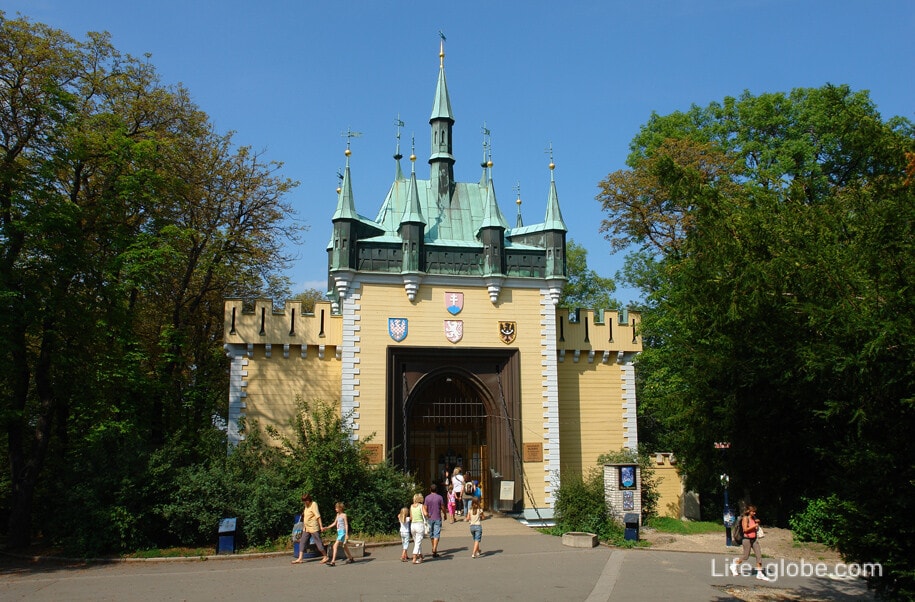
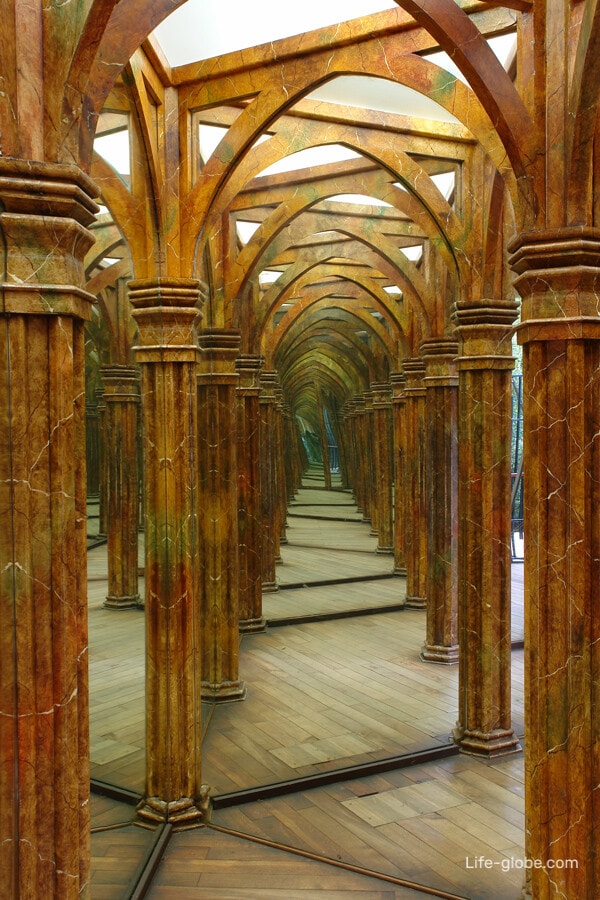
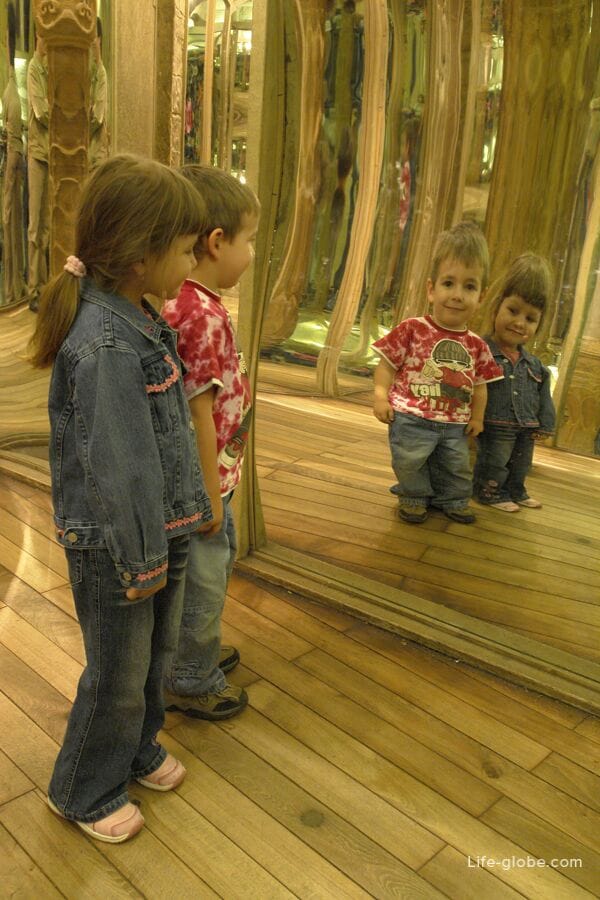
St. Lawrence Church and the Way of the Cross
St. Lawrence Church (Katedrální chrám sv. Vavřince) is a Baroque cathedral, which is protected as a cultural monument and used by the Old Catholic Church as a cathedral.
The church acquired its present appearance in 1739-1745 during the reconstruction in the Baroque style designed by Kilian Ignak Dinzengofer, builder Jan Ignaz Palliardi.
In the baroque appearance of the church, three-dimensional sculptures and three towering towers attract attention, two external and the middle one with a dome.

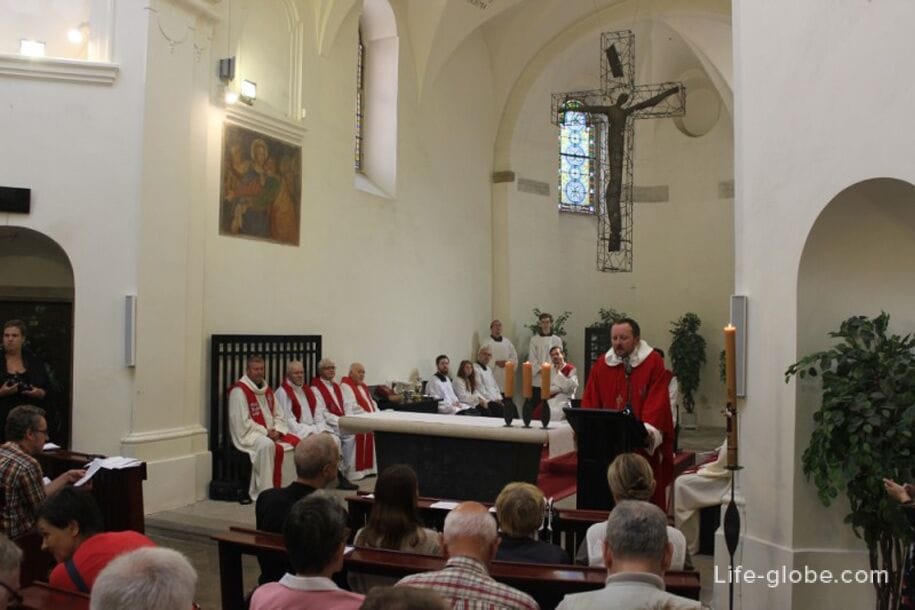
The cathedral building was conceived as a place of pilgrimage, to which a total of 14 stops on the Way of the Cross (small chapels-niches), as well as the chapel on Golgotha (Kaple Kalvárie) and the Chapel of the Holy Sepulchre (Kaple Božího hrobu) lead along the Petrshinsky Hill. More about the Cathedral and the Way of the Cross…
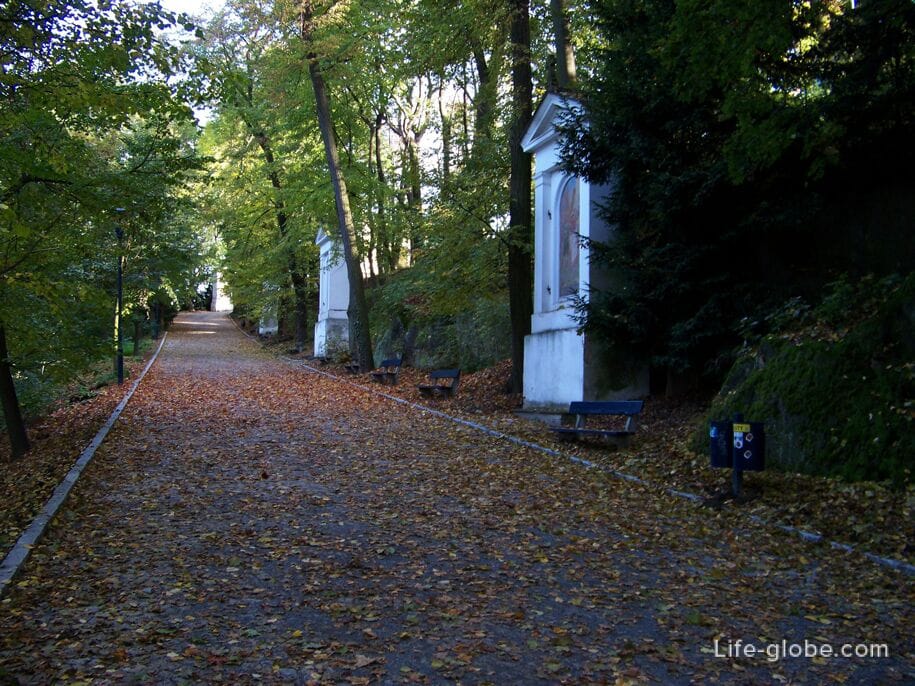
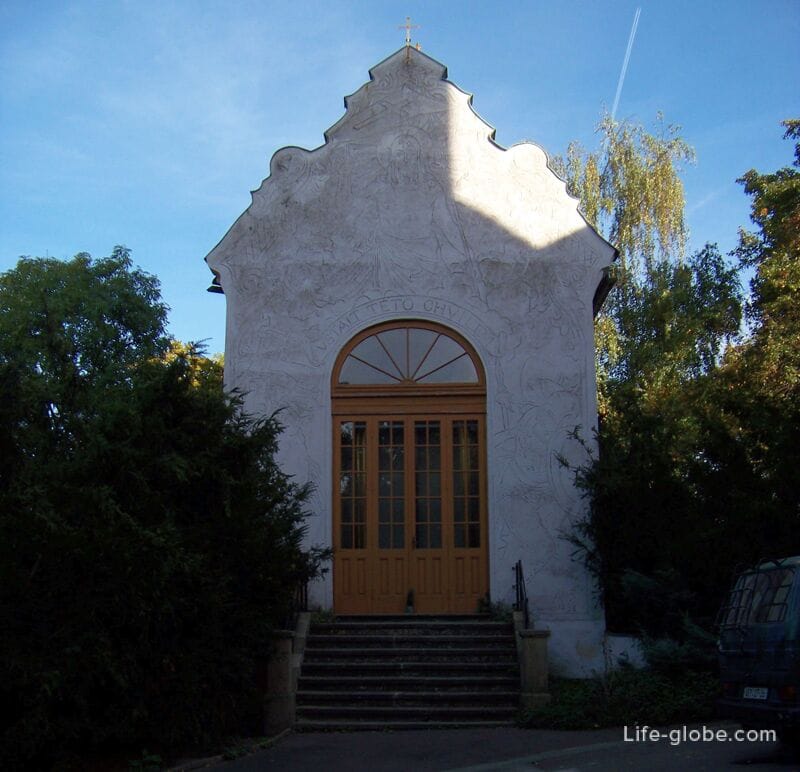
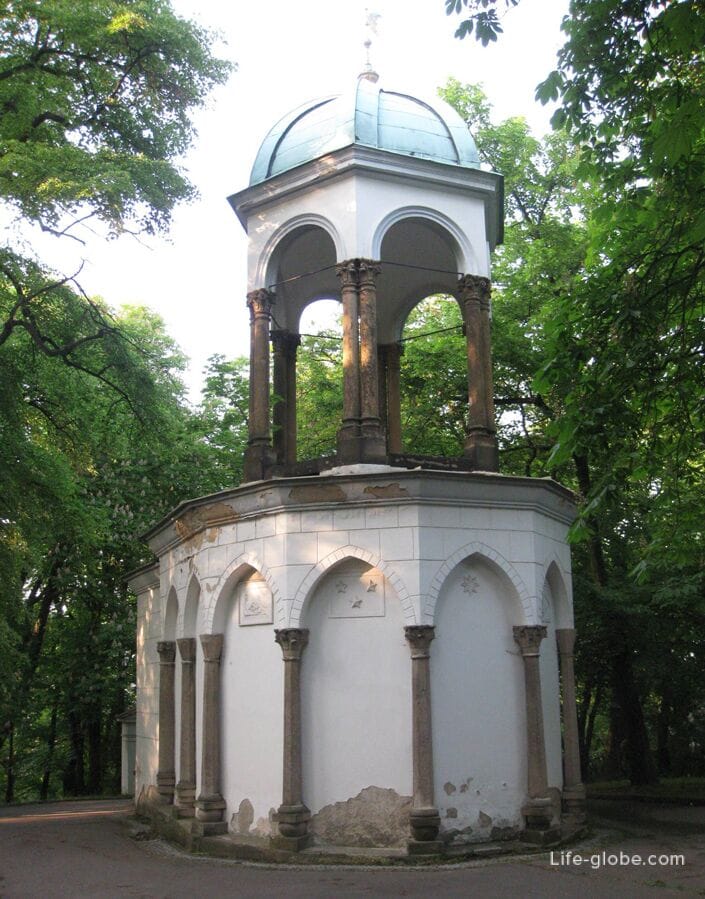
Stefanik Observatory
The Stefanik Observatory (Štefánikova hvězdárna) has been located on Petršina since 1928, and it acquired its current form during a large-scale reconstruction in the mid-1970s.
The observatory houses a permanent exhibition dedicated to astronomy and astrophysics, there is an exhibition of meteorites, and the most interesting thing is that the observatory offers public observations of the day and night sky using large telescopes. Excursions are also conducted around the observatory and thematic exhibitions are held within its walls.
Entrance to the observatory is paid.
Observatory website: planetum.cz/stefanikova-hvezdarna.
Next to the observatory there is a sundial made of gray stone, which is one of the oldest sundial in Europe.


Church of St. Michael the Archangel
The Church of the Holy Archangel Michael (Biserica Ortodoxă Română Sf. Arh. Mihail Praga) is an Orthodox partially wooden church that was opened for use by the Czech and Slovak Orthodox Churches in early 2008.
The church in the Boykov style with elements of rustic Baroque was originally built in the second half of the 17th century and transported to Prague from Subcarpathian Rus in 1929. During the history of the church, it was completely dismantled and rebuilt.
The shrine is distinguished by three onion towers. The tallest tower has a height of more than 17 meters and rises above the women's playground, popularly called "babatai", symbolizing the basic Christian virtues: faith, hope and love.
Church website: parohiapraga.eu.


Hungry Wall
The Hungry Wall or the Wall of Hunger (Hladová zeď) is the former original fortification of Prague of the 14th century.
The wall was erected as a defensive fortification Prague Castle and Malaya-Country between 1360 and 1362 by order of Charles IV. Initially, the wall had a height of 4 to 4.5 meters and a width of 1.8 meters and was equipped with loopholes and, most likely, eight bastions. During the history of the wall was modified and reconstructed.
Initially, the wall was called Zubata (crenellated) or Khlebova (built for bread). The adjective "Hungry" (Hladová) only appeared after the famine of 1361, when building work on the wall provided a livelihood for the poor. According to a widely held myth, the purpose of building the wall was not strategic, but to hire and thus feed the poor. Another myth is that Emperor Charles IV himself worked on the wall for several hours every day - "to help his beloved people."
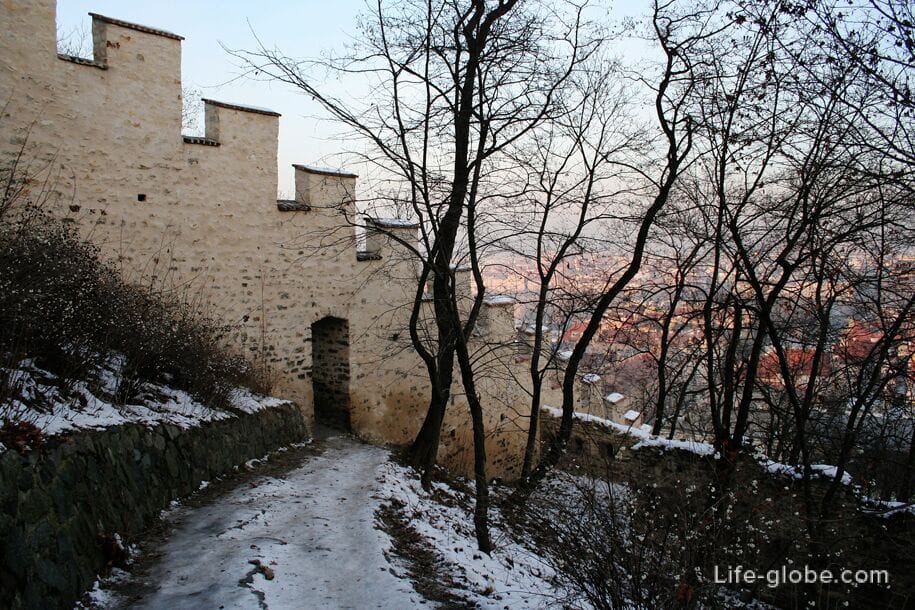
Kinsky Palace - Ethnographic Museum
The Kinski Palace (Letohrádek Kinských) traces its history back to 1798, when the widow Princess Ruzena Kinska bought land with vineyards to plant an orchard.
The princess's son, Prince Rudolf Kinsky created an English park on earth in 1827-1831 and a richly artistically decorated villa in the style of classicism (dacha). The cottage was built according to the project of Yindřich Koch, who also designed an outbuilding in the lower part of the site.

Today, the walls of the palace house the ethnographic exposition of the National Museum of Prague (Narodni muzeum Praha), representing the life of the countryside of the 19th and 20th centuries.
The museum also hosts temporary exhibitions, performances by folklore ensembles, courses in traditional crafts, folk dances and art workshops.
Entrance to the museum is paid.
Museum website: narodopisne-muzeum-narodniho-muzea. More about the National Museum of Prague…
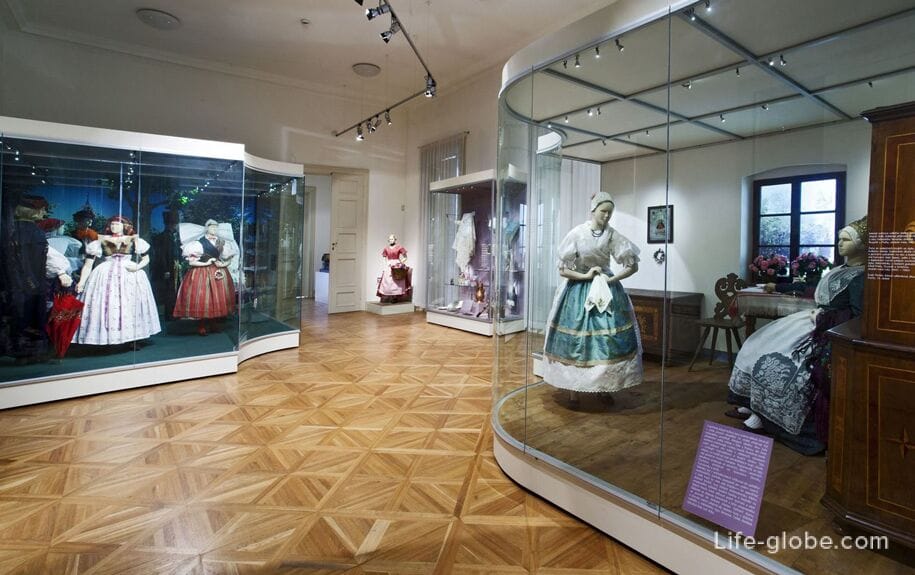
Memorial to the victims of Communism
The Memorial to the Victims of Communism or Monument to the Victims of Communism (Pomník obětem komunismu) was created in memory of the victims of the Communist era between 1948 and 1989, and opened on May 22, 2002, twelve years after the fall of communism in the Eastern Bloc.
The memorial depicts large bronze nude human figures standing on the steps of a staircase, where each of the sculptures is at a different stage of human destruction - some of the sculptures have no limbs, while others are being destroyed or have already been almost completely destroyed.
The figures in the monument symbolize how political prisoners suffered from communism, and also show the suffering of prisoners, their courage and resilience. More about the memorial to the victims of Communism…
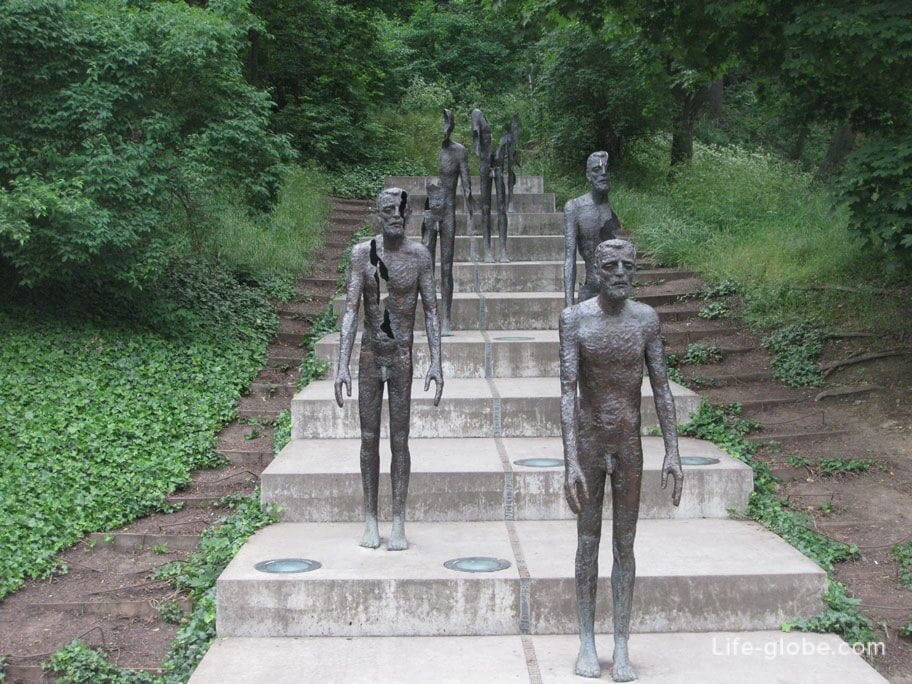
Strahov Monastery
Strahov Monastery (Strahovský klášter) belongs to the oldest monasteries of the order of premonstrant monks.
The Strahov Monastery is a complex where you can visit: the Strahov Library with Baroque Theological and classical Philosophical Halls, the Strahov Art Gallery with Baroque and Rococo paintings, the Basilica of the Ascension of the Virgin Mary, the Church of St. Roch and the Strahov monastery brewery.
On the slope, near the monastery, Strahovsky garden with vineyards (Strahovská zahrada), which was founded in the early Middle Ages as a subsidiary farm, is spread out.
From the platform above the garden, which is near the monastery, there are wonderful panoramic views of the garden and Prague.
Address of the Strahovsky Monastery: Strahovské nádvoří 1/132, 118 00 Praha 1. More about the Strahov Monastery…
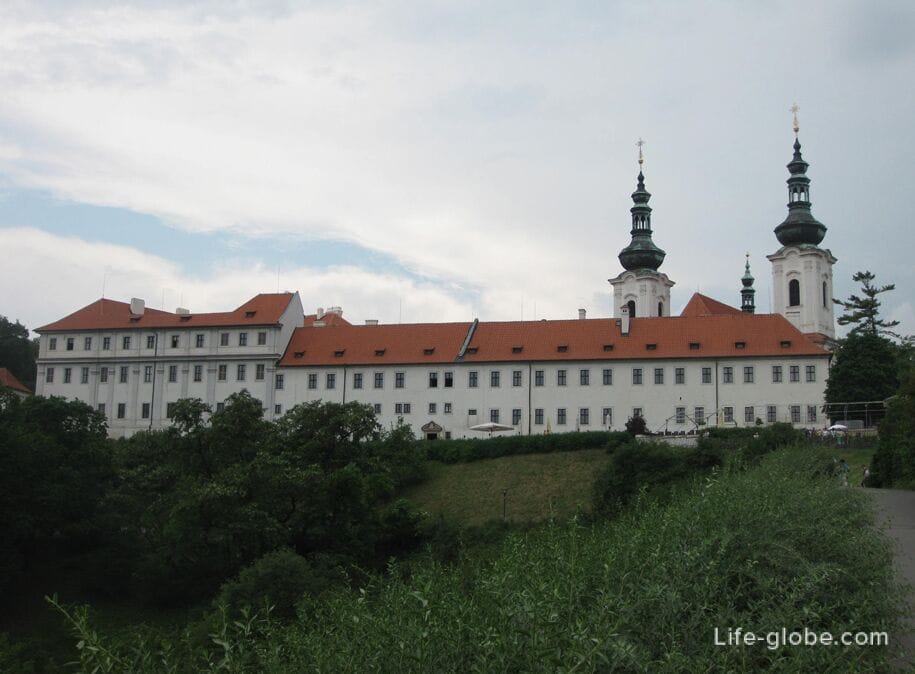
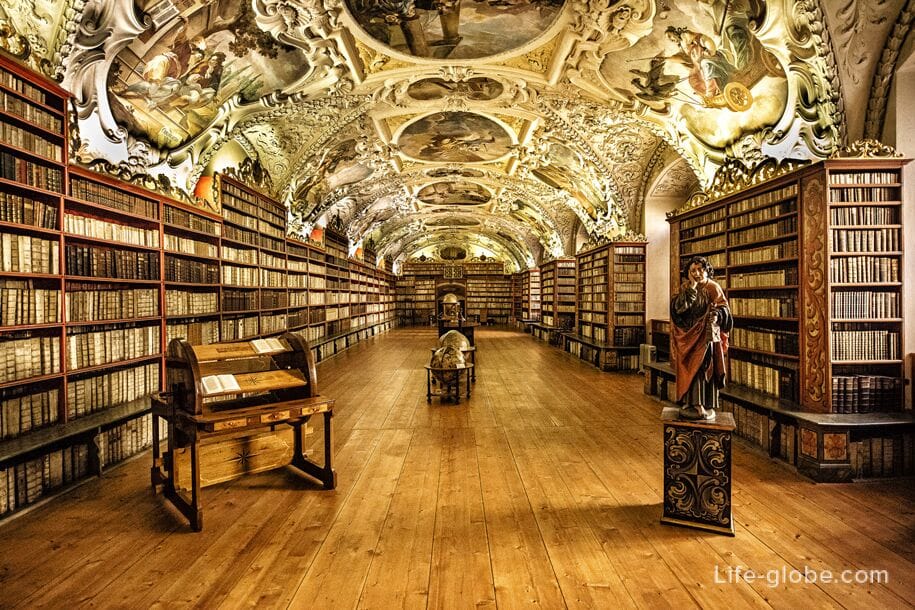
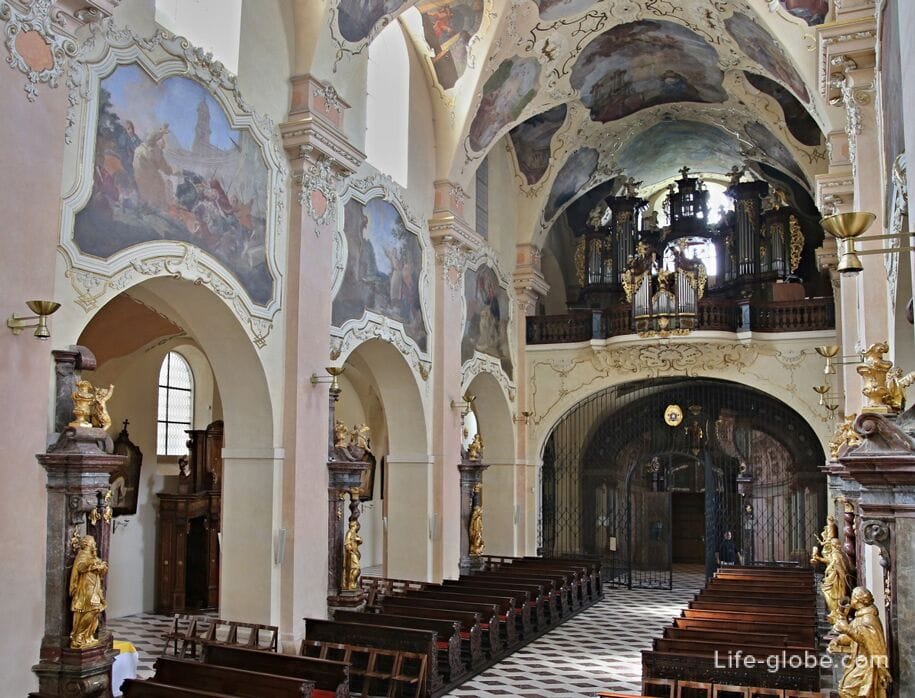
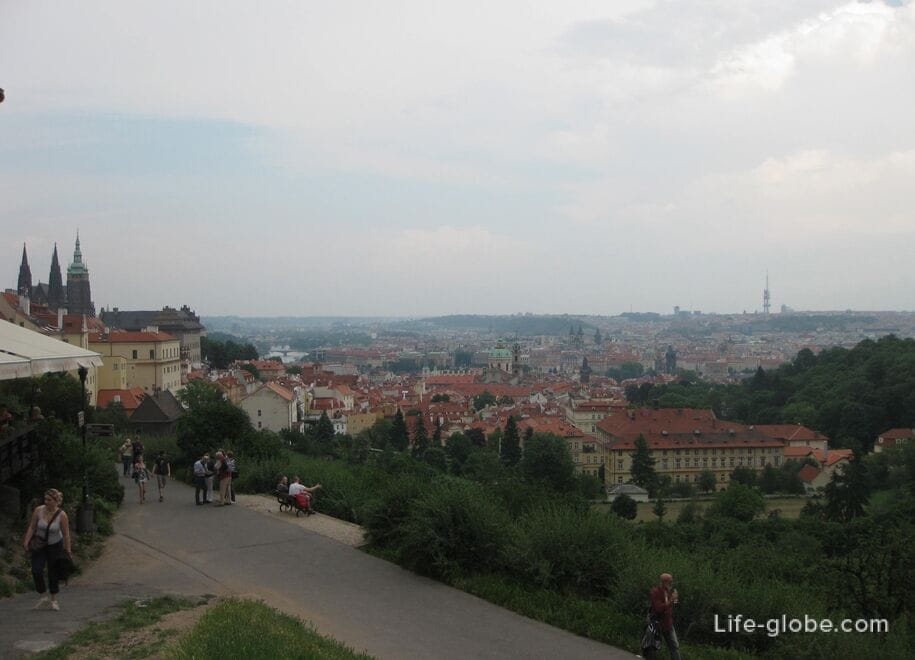
Petrshinsky Gardens
Petrshinsky Gardens (Petřínské sady) is the collective name of an extensive complex of interconnected gardens and parks that spread out on the slopes and top of the hill.
Petrshin Gardens include:
- terraced Lobkovitsky Garden (Lobkovicka zahrada), which is the oldest of the gardens that once belonged to the Lobkovitsky Palace. The garden offers views of Prague;
- Nebozizek Garden (Zahrada Nebozízek), located on the eastern slope of the hill between the funicular and the Hungry Wall. The garden starts from Uezd Street and rises almost to the top of Petrshin to the Stefanikov Observatory. Initially, in the 15th century, it was a vineyard, then an orchard, which was expanded in the 20th century at the expense of a Dahlia Garden (Jiřinkový sad), and then opened to the public.
The most famous decorations of the Nebozizek Garden are: the monument to the poet Karl Ginek Mache, created in 1911 by Antonin Balshank by Josef Vaclav Myslbek; the monument to the composer Vitezslav Novak by Josef Gochar and Jan Kodet in 1950; a monument made of granite and marble "In memory of the hospitality extended to the Voits by Naprstek in 1865-1883 years of youth of Prague schools". In the upper part of the garden there are sandstone cliffs and several observation decks with views of Prague;
- rose Garden or Rose Garden (Rosary, Růžový sad) is the youngest garden of Petrshin, located on the top of the hill. The garden was created in 1932-1934 on the site of former military lands by architect J. Kumpan. Roses grow in the garden, there are flower beds and a so-called Flower garden with perennial plants and a lake with statues of a Water and a Mermaid by sculptor William Amort. The rose Park is also decorated with the sculptural composition "Mind and Feelings" by Ladislav Shaloun;
- park "At the observation tower" or the Petrshinsky Garden (park U rozhledny, Petřínská zahrada), located at the foot of the observation tower of Petrshinskaya;
- Big Strahovsky Garden (Velká strahovská zahrada), located on the slope of the Strahovsky Monastery. The garden was founded in the early Middle Ages as a functional garden and nowadays it has been preserved as an orchard with areas of oak and hornbeam forest. Between the park and the forest there is an ambo, in the forest area there is a Hell hermitage with a view of natural sandstone caves. The garden is ideal for relaxing walks with a view of the city;
- Seminary Garden (Seminářská zahrada), which was originally called Grispekovská zahrada. In the first half of the 17th century it was the monastery garden of the Carmelite Order of the Virgin Mary the Victorious. The servants of the monastery in the upper part of the garden in the sandstone rocks knocked out caves. After the monastery was abolished in 1784, the garden was transformed into the garden of the Archiepiscopal Seminary. About 2,100 fruit trees and 150 dwarf trees grow in the Seminary Garden. One pear tree in the garden allegedly still preserves the memory of Jan Neruda, who was born in the neighboring, later demolished barracks in the County. Therefore, in the lower part of the garden, next to the funicular, there is a bronze statue of him, made in 1970 by Jan Simota. Nearby there is a bronze fountain with statues of boys;
- Schoenborn Garden (Shenbornská zahrada), located on the northeastern slope of the hill and belonging to the Schoenborn Palace (Schönbornský palác Colloredovský), which with part of the garden is closed to the public. The paths in the accessible part of the garden offer views of Prague.

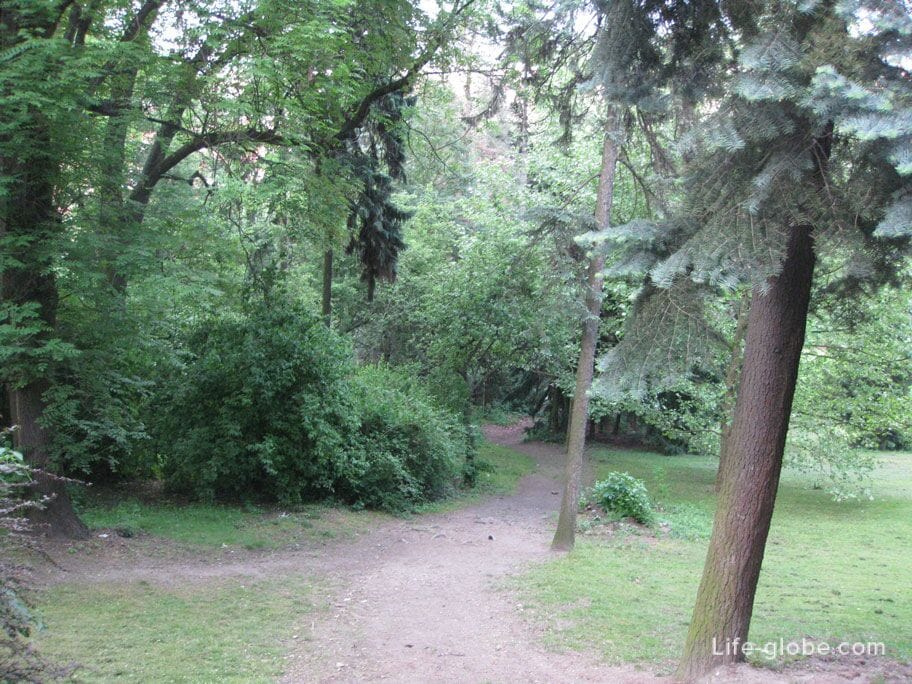
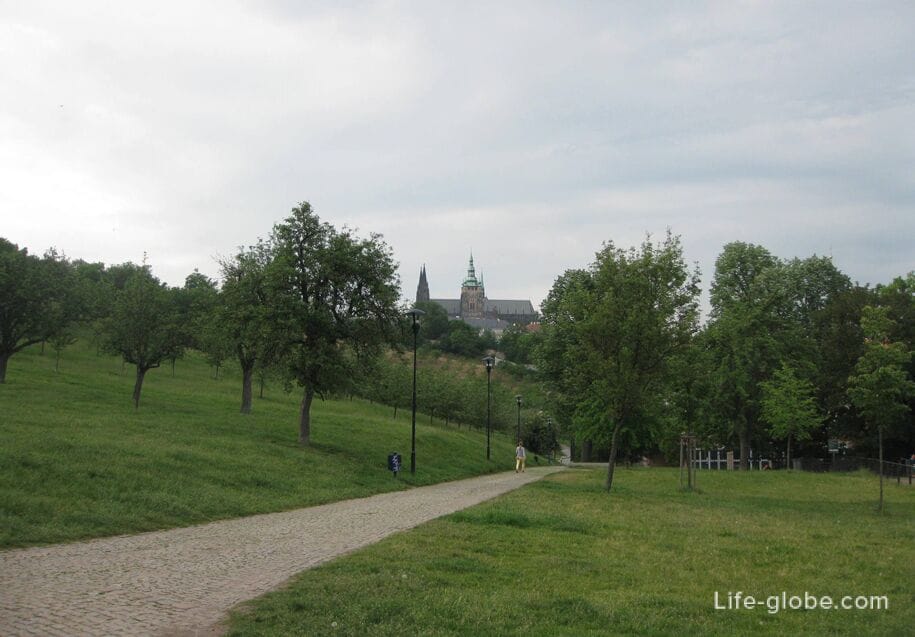
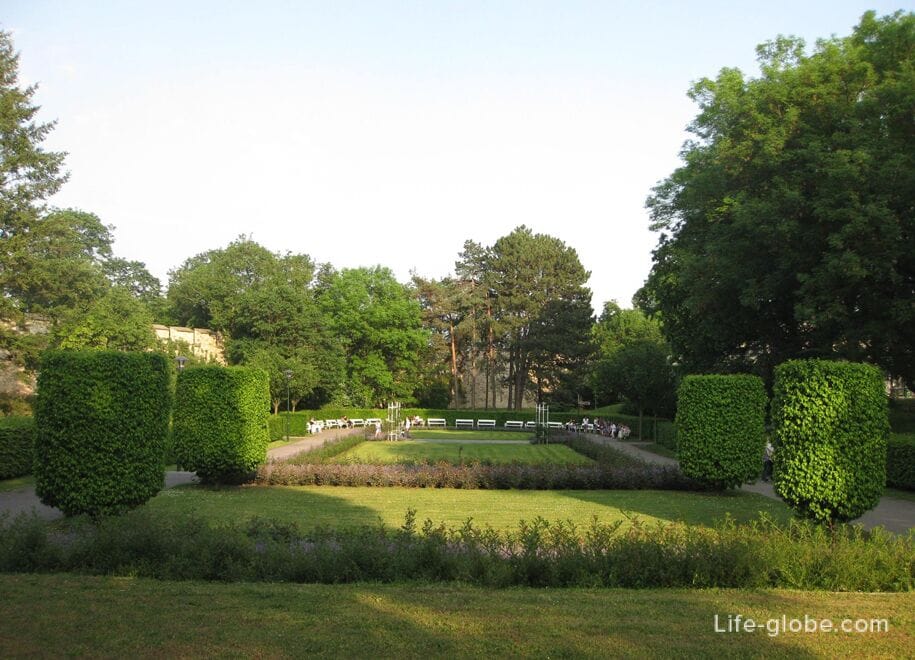
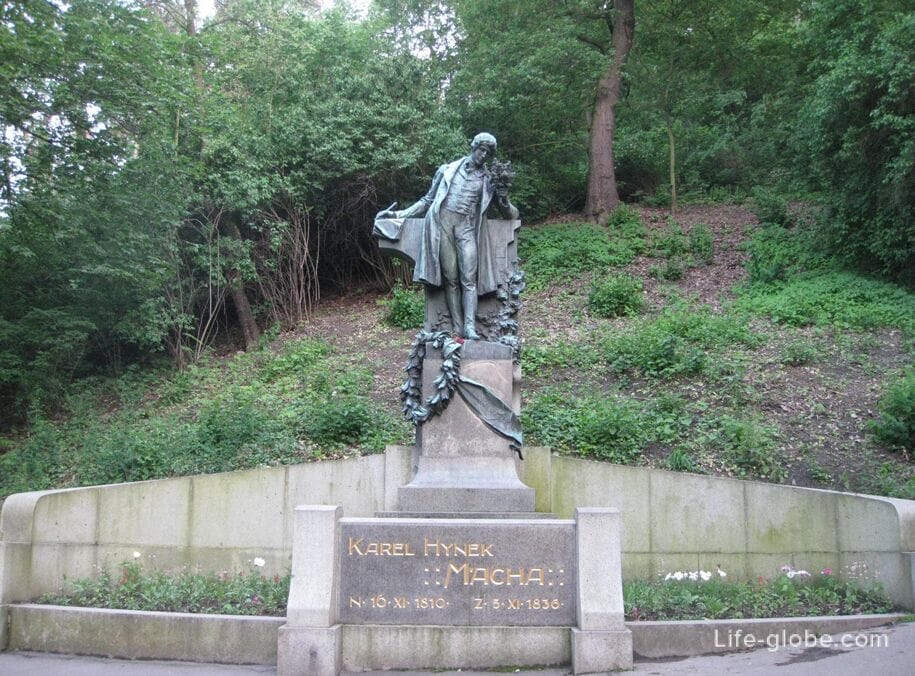

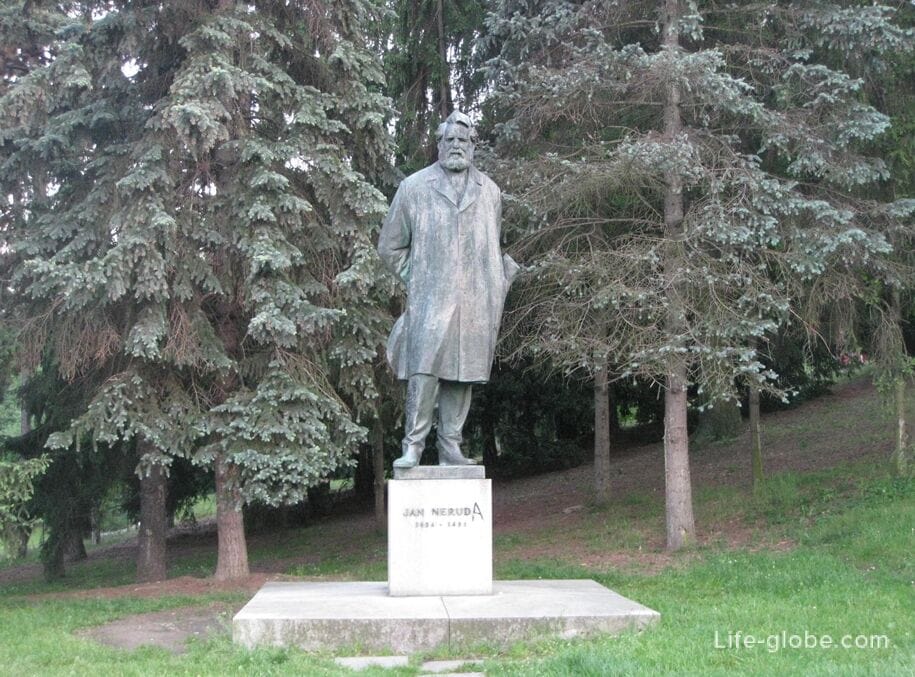
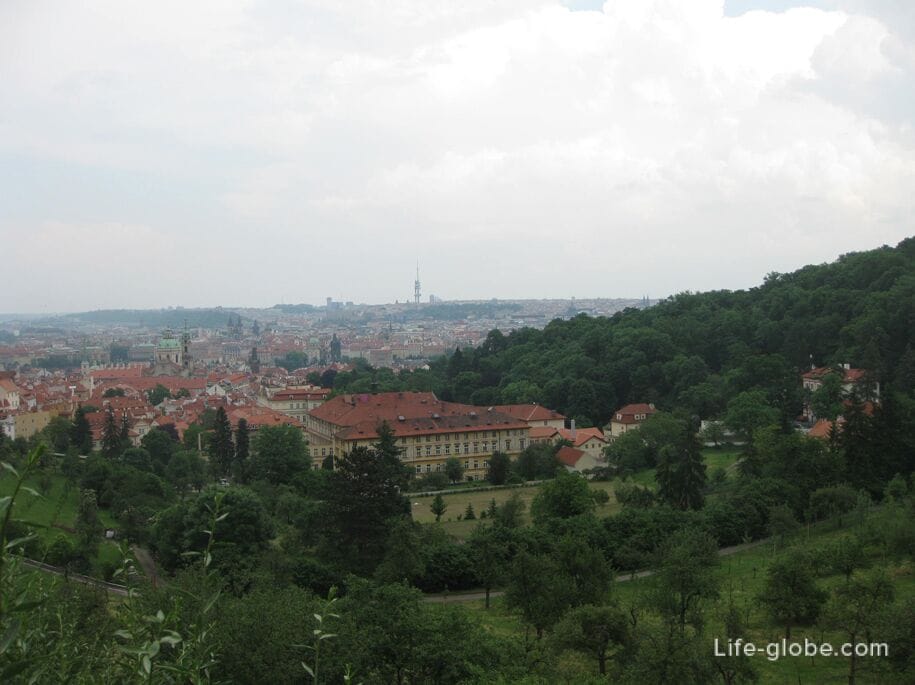
Separately from the gardens of Petrshin stand out:
- Kinsky Garden (Zahrada Kinských), located near the Kinsky Palace, having 22 hectares and separated from other gardens of Petrshin by a Hungry wall.
In the garden: the lower pond with a statue of Hercules, the upper pond with a sculpture of a sea lion, sculptures, places for walking and relaxing, lawns, a playground and a small fountain. The garden offers panoramic views of Prague.
Entrance to the garden is free;
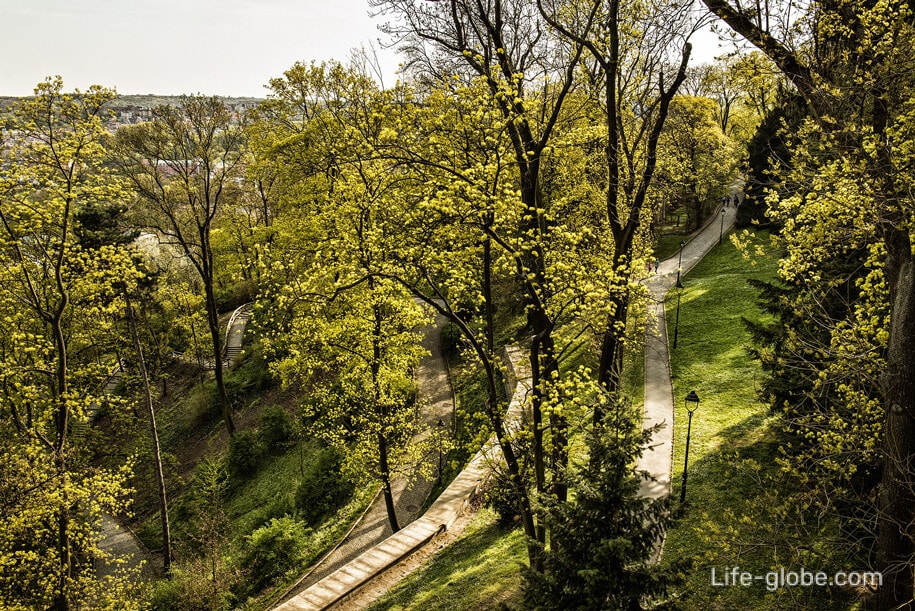
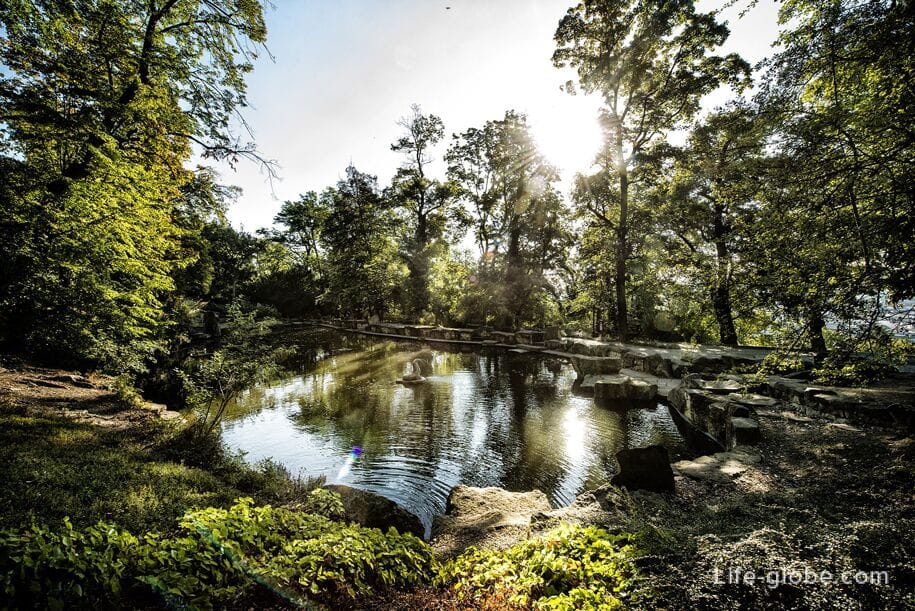
- Vrtbovsky Garden (Vrtbovská zahrada), which is considered one of the most beautiful Baroque gardens in Prague.
The garden has a sculptural design and terraces with views of Prague.
Entrance to the garden is paid. The entrance fee to the garden includes a visit to the Large and Small galleries with a permanent exhibition.
Garden website: vrtbovska.cz.

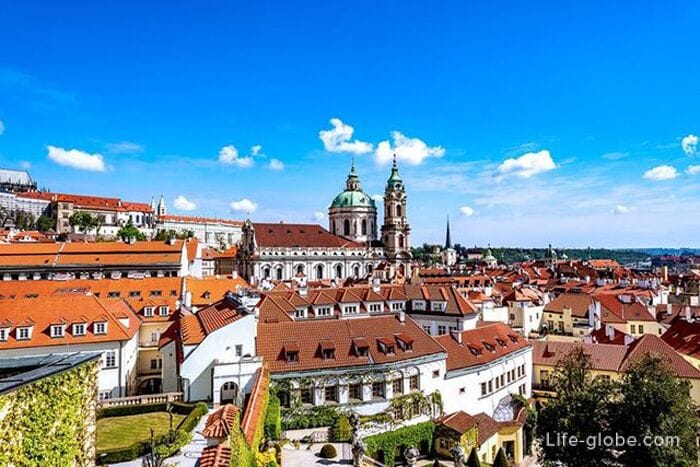
Coordinates of the Petrshin Hill (Petrshin Observation Tower): 50°05'01.0"N 14°23'43.0"E (50.083611, 14.395278).
All accommodation facilities in Prague (hotels, apartments, guest houses, etc.), including in the historical center of the city and more remotely from it, can be view and book here








